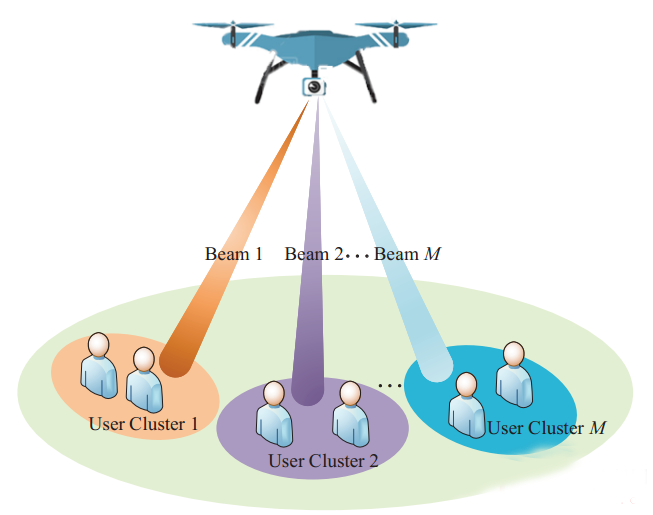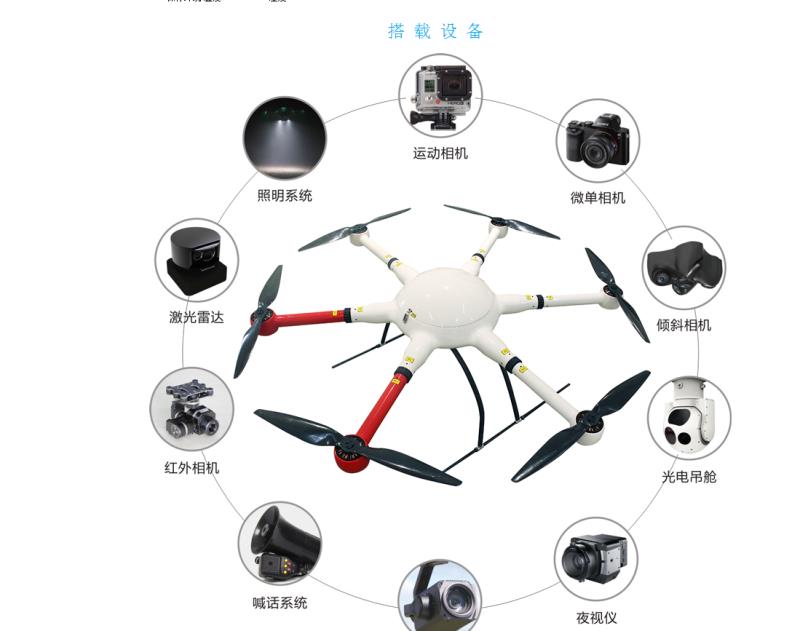Energy-saving optimization design of millimeter wave UAV communication
UAV communication is playing an increasingly important role in the field of wireless communication due to its high flexibility, maneuverability and gradual reduction in cost; non-orthogonal multiple access (NOMA) and millimeter wave technologies are to meet the explosive data traffic demand of 5G The two key technologies. Therefore, a recent study applied both NOMA and millimeter waves to drone-to-ground communication networks to meet user service quality requirements while increasing the number of users that the network can accommodate.
The research-related paper is titled: "Energy-Efficient Design for mmWave-Enabled NOMA -UAV Networks", written by Professor Nan Zhao from Dalian University of Technology as the corresponding author and his team. The researcher aims to maximize the energy efficiency of the millimeter wave UAV communication network by jointly optimizing the UAV position, hybrid precoding vector and power allocation.
Due to the dense deployment of communication equipment and the vigorous development of the Internet of Things, the spectrum resources that UAVs can use are very limited. In this context, the use of NOMA can achieve spectrum sharing to improve frequency band utilization; on the other hand, millimeter wave technology provides a large amount of unused frequency band resources, which can alleviate the current frequency band congestion. Although there are many studies on performance analysis and optimization design of UAV millimeter wave communication networks, and energy-saving designs that consider the limited energy of UAVs are also abundant, there are few UAVs that use both NOMA and millimeter wave beamforming technologies. Energy-saving optimization design of the network.

Model diagram of millimeter wave UAV non-orthogonal multiple access communication network
The millimeter wave UAV communication network model diagram of this research is shown in Figure 1. The multi-antenna UAV sends the required information to a large number of single-antenna ground users. In a millimeter wave network, the number of users that can be supported under the same time-frequency resource is usually not greater than the number of radio frequency chains. In order to break through this limitation, the network divides users into multiple groups based on channel correlation, and uses NOMA in each group to provide services to users at the same time. In addition, in the traditional multi-antenna system, each antenna needs to correspond to a dedicated radio frequency chain to realize all-digital signal processing, which will cause the hardware cost to be unbearable in the millimeter wave system. Therefore, in order to reduce hardware costs and energy consumption, while also ensuring network performance, a hybrid precoding structure is adopted. Since the modeled energy efficiency maximization problem is very complex and difficult to solve, it is divided into several sub-optimization problems. First, optimize the deployment of UAV locations to enhance the user's channel quality. Then, three different hybrid precoding schemes based on user clustering are proposed to better obtain multi-antenna gain. Finally, energy efficiency is maximized through power distribution among users.
In particular, three hybrid precoding schemes are considered in the network, and user clustering, analog precoding and digital precoding are designed to improve user communication performance and suppress inter-user interference. The performance of these solutions in terms of user fairness, spectrum efficiency and energy efficiency is different, and the simulation results further prove this point. The effectiveness of the proposed scheme is verified by simulation comparison with other schemes without UAV location optimization and energy efficiency requirements. In addition, the numerical results also reveal the impact of the maximum transmission power of the UAV and the number of RF chains on energy efficiency.
FD1550 hexacopter max payload to 12KGS

FD1550 drone Specification
Aircraft Type: Hexacopter
Wheelbase: 1550mm
Airframe Material: Carbon Fiber And Composite Materials
Package Size: 400*730*930mm (standard)/ 700*700*300mm+110*45*20MM(portable)
Weight (Without Batteries Or Payload): 6.8kg
Max. Take-Off Weight:21-23kg
Max. Payload: 10-12kg
Max. Climb Speed: 4m/s
Cruise Speed: 10m/s
Max. Flying Speed: 15m/s
Battery Capacity: 22000mAh*12S LiHV 30000mAh*12S 18650 22000mAh*12S2P LiHV
Flight Time (Without Load): 62min(22000mAh*12S LiHV) 74min(30000mAh*12S 18650) 81min(22000mAh*12S2P LiHV)
Max. Control Radius: 10km
Max. Altitude AMSL: 4000m
Hovering Accuracy:Vertical ±1m, Horizontal±1.5m
Max. Wind Resistance: Level 6
Operation Temperature: -20~60℃
IP Rating:IP56

